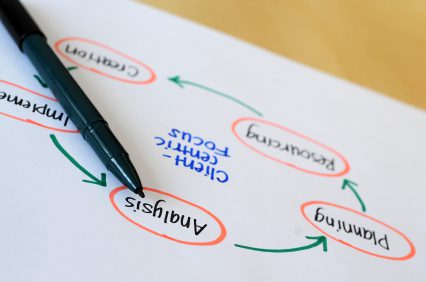Project success is directly linked to a project manager’s ability to effectively identify and manage stakeholder’s expectations. It’s therefore helpful to understand what makes a stakeholder!
These days it seems as if everyone is talking about stakeholders, is a stakeholder, or needs to manage stakeholders. Surprisingly, this has not always been the case. The modern concept of stakeholders seems to have emerged from the work of the Tavistock Institute in London in the late 1960s and early 70s. 40 years later, the concept of stakeholder has expanded to include all of the people and organisations who have a real or perceived ‘stake’ in a project or its outcomes.
A breakdown of the definition of a stakeholder from the PMBOK® Guide is; ‘A person or organisation that is:
– Actively involved in the project.
– Who’s interests may be positively or negatively affected either by the work of the project or the outputs from the project.
– Who may exert influence over the project or its deliverables.
This definition pretty much covers all bases, it recognizes the work of the project and the output from the project may have different stakeholders and may affect the same stakeholder differently. For example, a stakeholder may be negatively impacted by the noise and traffic involved in the construction of a shopping centre but positively impacted once it’s open through increased property values and enhanced neighbourhood amenities.
In my work on mapping and managing stakeholders, I have found it important to expand on this basic definition to understand the ‘stake’ of each stakeholder. Understanding the stakeholder’s stake in the work or its outcomes helps determine the best way to engage with them. I use the acronym IRONIC to highlight the different stakes a person or organisation may have (most have more than one). IRONIC stands for:
Interest: A person or group of people believe they are indirectly or directly affected by the work or its outcomes.
Rights: To be treated in a certain way or to have a particular right protected, including legal rights and moral rights.
Ownership: A circumstance when a person or group of people has a legal title to an asset or a property affected by, or needed for the work.
kNowledge: Specialist knowledge or organisational knowledge needed for the work
Impact or influence: Impacted by the work or its outcomes, or can impact (or influence) the execution of work or its outcomes.
Contribution: Of support or assets including the supply of resources, the allocation of funding, or providing advocacy for the objectives of the project.
Once you understand the stake the stakeholder is seeking to protect, profit from or enhance you can structure your communications to let the person know you understand their hopes or concerns and from this starting point you are in a much better position to manage the relationship to the benefit of both the project and the stakeholder.
An important sub-set within the overall stakeholder community are those people and organisations you need to actively support or contribute to the work of the project. If you can understand what each of these stakeholders want from the project, then link your needs to their expectations you are well on the way to success. This concept of a two way trade is called mutuality.
The self-interests for this group of stakeholder’s may be increased power, prestige or a tangible benefit such as achieving KPIs. If you understand what the stakeholder requires from your project, you will be in a much better position in the negotiations to obtain what the project needs from the stakeholder. WIFM (what’s in it for me) is a much stronger incentive than pure altruism.
Ideally for each of these key contributors, you will understand:
- The ‘stake’ the stakeholder has in the project.
- What the project needs from the stakeholder.
- What the stakeholder expects or requires from the project.
From this basis you are in a good position to negotiate effectively. More on this next time.




Thanks for sharing this with us Lynda – I look forward to reading more about the Stakeholder Circle®